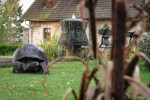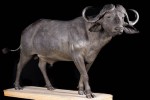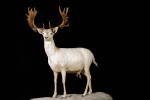Vicuña – Vicugna vicugna
Vicuña – Vicugna vicugna
The Vicuña or vicugna is a species of mammal in South America that lives in the highlands of the Andes. These animals are found in Bolivia, Peru, Chile, and the northwest of Argentina, Peru has the largest population, while Bolivia has a large wild population in the south-west.
As alpaca, vicuna belongs to the camelid family.
It has a shoulder height of 0.75 m to 1.00 m and it is long of 1.20 to 1.80 meters, which makes it the smallest of the camelids. The vicuña has a long neck and a thin muscular and muzzle. Short tail is fawn on top and white or tan underneath. Its ears are long, sharp and thin, legs, long and thin too. The lower incisors of the vicuna are very long and grow continuously, as in rodents.
Its back, neck, head and front of legs are tawny, contrary to its chest and back paws that are white. Its coat consists of a particularly fine fiber. Its chest is adorned with long white hair that can measure up to 30 centimeters long and its low weight varies between 40 and 60 kilograms.
The vicuña lives in groups consisting of one male, two or three females and hatchlings. These groups are called harems. They spend most of their day feeding, reserving the night rumination, so this is a diurnal animal. The birth of young vicunas on the high prairie.
The vicuña is herbivorous, feeding only grass and other herbaceous plants. It managed to select the young shoots through its upper lip split into two allowing it to sort the herbs. Its incisors are another adaptation to its diet because they are very large and growing constantly. Its long neck enables it to reach the ground to graze without having to bend its legs.
Pumas, foxes and Andean condors are its main predators.
Wool from its particularly fine fleece is used to make luxury clothing.





